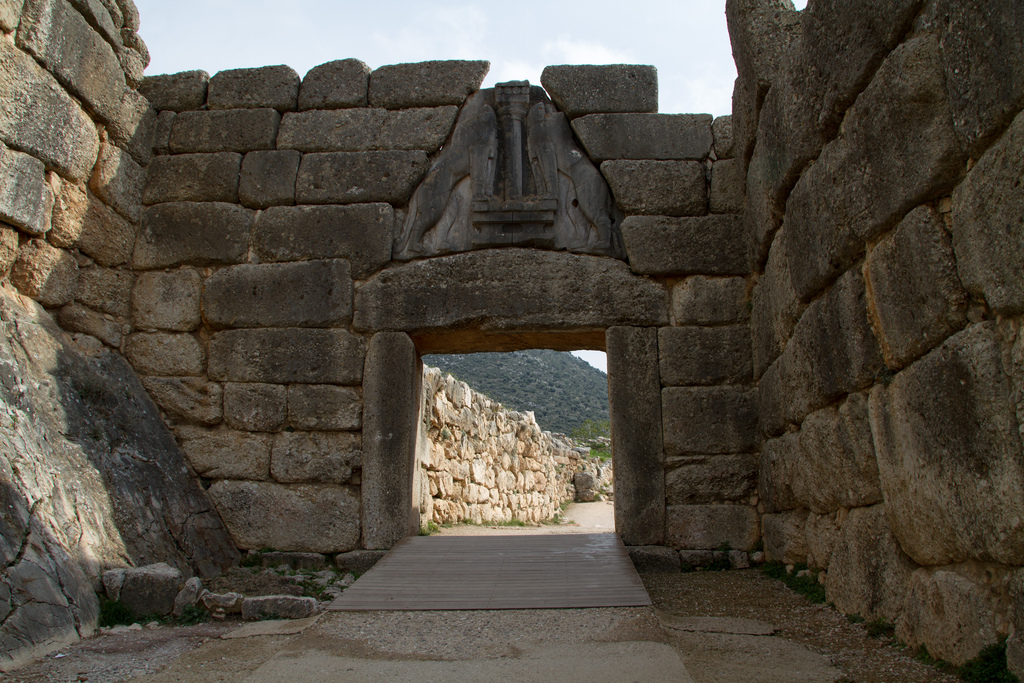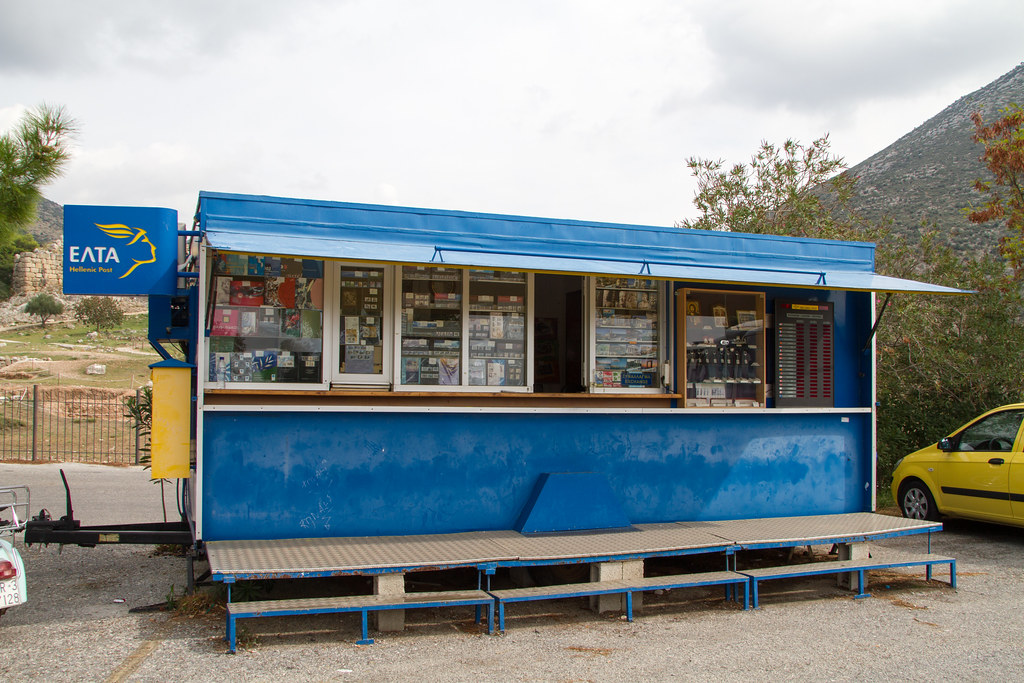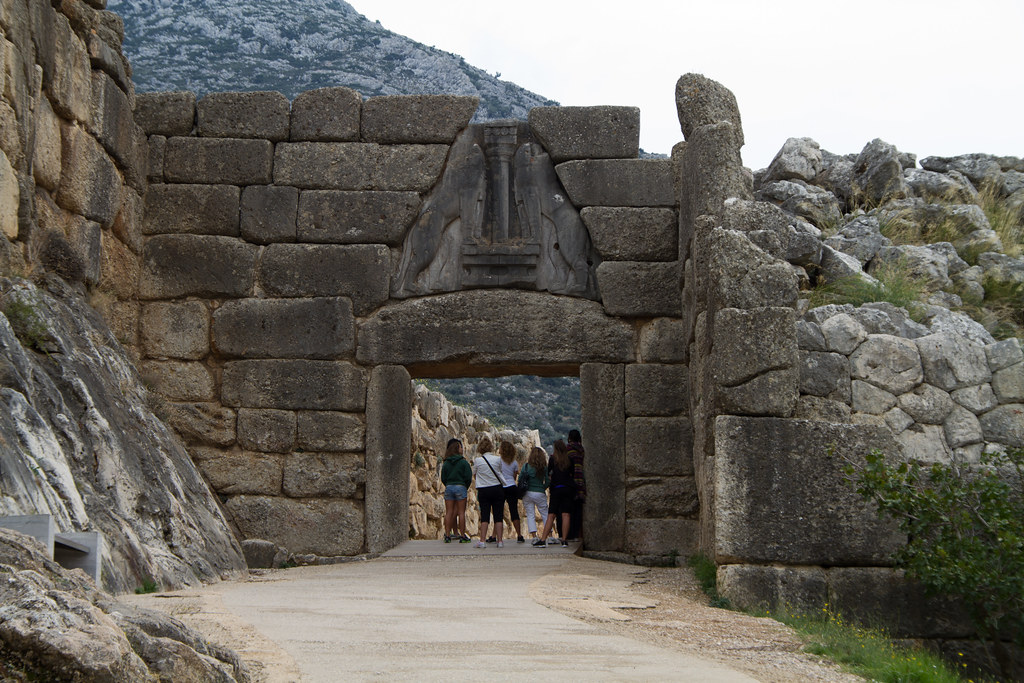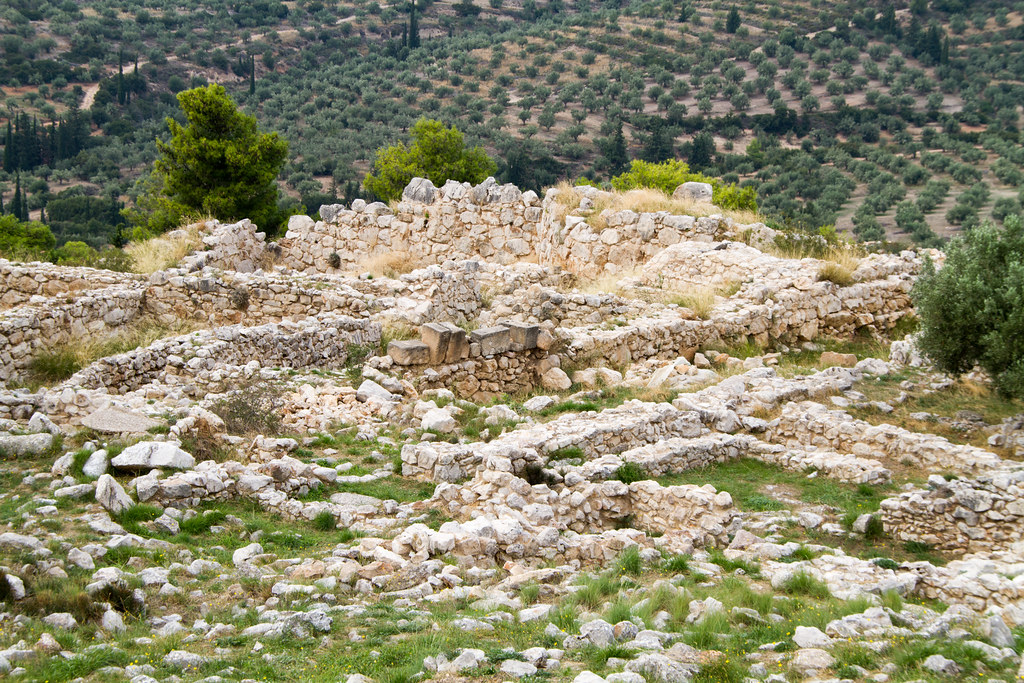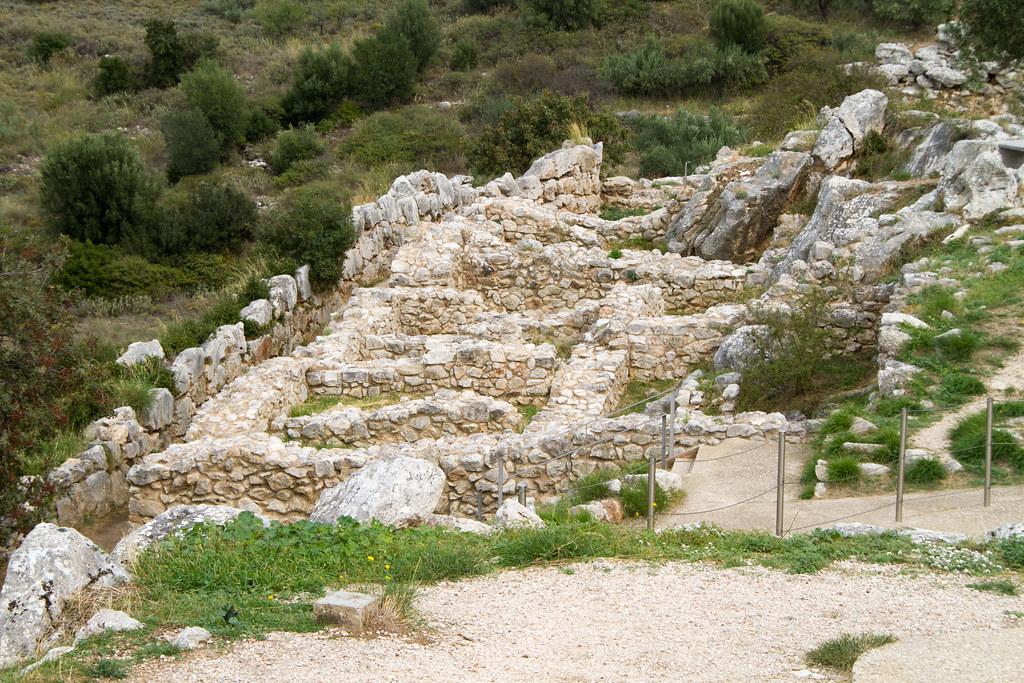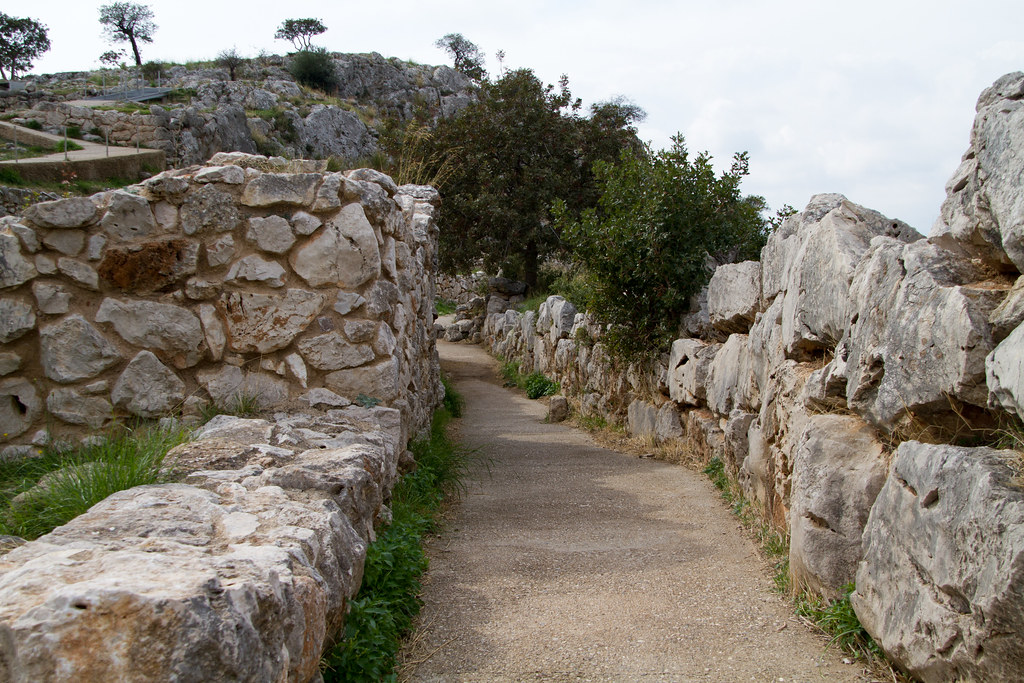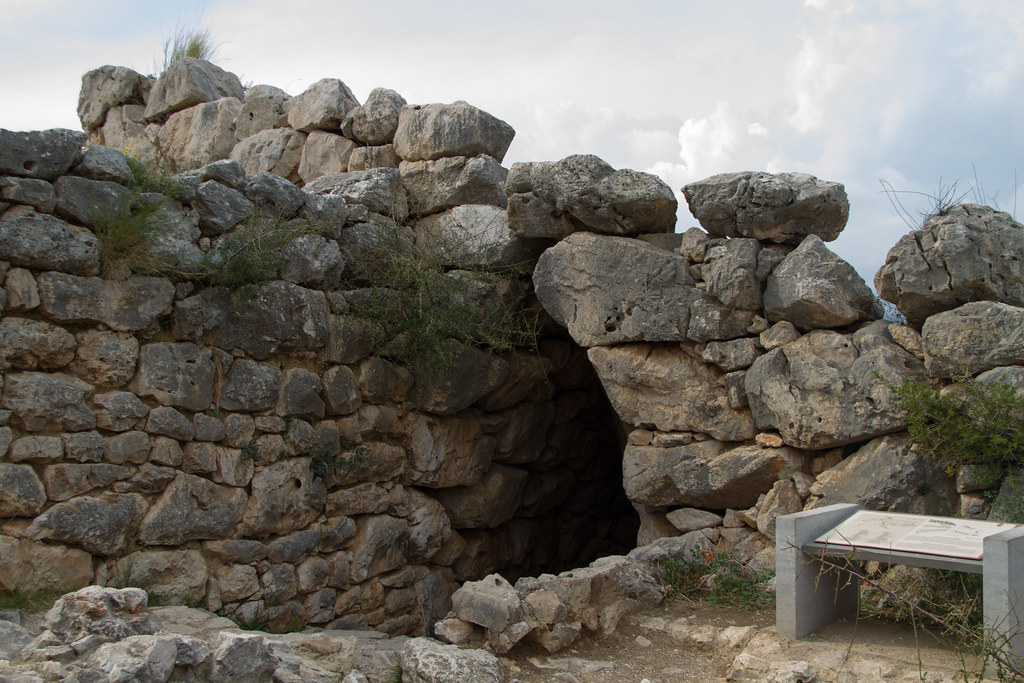The trip to the ruins continues on the last day. We arrived at Mycenae a little after 2pm, a little over three hours from Olympia.
This site is famous for being excavated by the famous Heinrich Schliemann. Although Schliemann himself stayed here only for about two weeks…
Let’s talk about ancient Greece for a moment. (I’m referring to Wikipedia)
First, the Trojan civilization flourished around Troy in Asia Minor around 2600 BC, and then the Minoan civilization flourished around Crete. This was around 2000 BC. The ruins of Santorini Island, where I stayed just a few days ago, were from the time of this Minoan civilization.
Then came the Mycenaean-Tyrrhenian civilization in the eastern Peloponnese, where we are now. It was around 1500 BC.
ちなみにサントリーニ島にあったアクロティリ遺跡は、紀元前1500年頃噴火と津波によって滅んだとされていますが、一方で、その頃に登場したミケーネ文明によって滅ぼされたという説もあるそうです。
Now, Mycenae ruins are flourishing as a tourist spot because of the discovery of Schliemann, the World Heritage, and the geographical advantage that it takes about 2 hours from Athens by car.
The parking lot is large enough to hold several buses, and the fact that there is a shop and an ATM suggests that it is a popular tourist destination.
By the way, you can also go there by taxi from Mycenae town. The ruins are a little bit far from the town of Mycenae.
It’s hard to tell from the pictures, but each stone that makes up the ruins is very large.
The entrance gate, “Lion Gate,” is also surprising in the size of the stones piled up.
Because of the size of the stones, it looks like it is not so wide, but when you actually walk around, you will notice that it is quite large.
It was dark and scary, though I was able to go inside the ruins.
It is quite chic to take a walk while dreaming about ancient civilizations.
まだクルマ返却までに時間はありますが、とある場所で夕日を見たいがため、ペロポネソス半島の世界遺産巡りはここで終わり。さらに東のアテネへと向かいます。(あと少し続きます)
